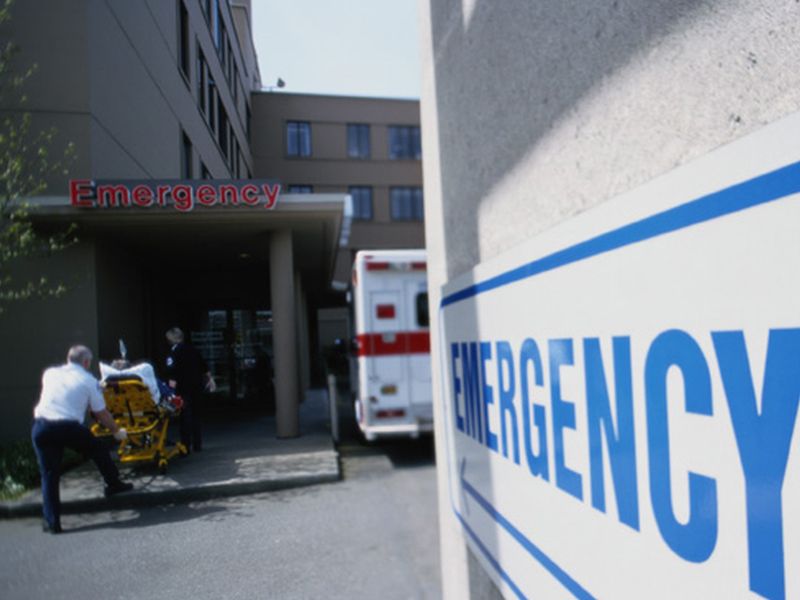Many Black Americans Live in Trauma Care 'Deserts'
By Dennis ThompsonHealthDay Reporter

FRIDAY, March 8, 2019 (HealthDay News) -- Black neighborhoods in America's three largest cities are much more likely to be located in a "trauma desert," an area without immediate access to a designated trauma center, a new study finds.
Census data for neighborhoods in New York City, Chicago and Los Angeles revealed that neighborhoods made up of mostly black residents are more often 5 miles or more away from a trauma center, compared with white or Hispanic neighborhoods, researchers said.
"We found that black neighborhoods were the only neighborhoods that were consistently in trauma deserts," said lead researcher Dr. Elizabeth Tung, an internal medicine and primary care instructor with University of Chicago Medicine.
This means that medical care for stabbings, shootings and beatings is lacking in the urban areas most affected by violent crime, the researchers said.
Tung's team noted that the rate of violent crime in rural Thurmont, Md., is five victims for every 10,000 people. The rate just 60 miles away, in urban Baltimore, is more than 25 times higher.
"When you think about who needs access to these services, it's really the poor inner-city neighborhoods, and those are the neighborhoods least likely to have access," Tung said.
Previous studies have associated urban trauma care deserts -- or regions located more than 5 miles from a trauma center -- with higher transport times and an increased risk of death, according to background notes in the study published online March 8 in JAMA Network Open.
For the new study, the investigators analyzed data from the 2015 American Community Survey, an annual research effort by the U.S. Census Bureau.
The researchers used the survey to assess the racial makeup of specific neighborhoods in the three largest U.S. cities. They found large proportions of majority-black neighborhoods in Chicago (35 percent) and New York City (21 percent), but not in Los Angeles (3 percent).
The investigators then compared the location of those neighborhoods to the sites of adult level I and level II trauma centers within the three cities.
The findings showed that black-majority neighborhoods were eight times more likely to be located in a trauma care desert in Chicago and five times more likely in Los Angeles. They also were nearly twice as likely in New York City to be in a trauma care desert, in models adjusting for poverty and race.
Interestingly, Hispanic-majority neighborhoods did not consistently have the same problem. They were actually less likely to be located in a trauma care desert in New York City and Los Angeles, and slightly more likely in Chicago, according to the report.
Many "safety net" trauma hospitals in poorer urban areas have shut down or scaled back operations over the years, as welfare and Medicaid funding have tightened, Tung said. This makes emergency care less available to people in those neighborhoods.
Examples include Michael Reese Hospital on the south side of Chicago, which closed in 1991 due to economic hardship, and Martin Luther King Jr. Hospital in Los Angeles, which lost its trauma center designation in 2004, the researchers noted.
On the other hand, activists in New York City rallied around Harlem Hospital and headed off its closure twice, which could explain why the Big Apple's black communities are not as likely to be in a trauma care desert, Tung said.
It's not cheap to operate a trauma center, said Dr. Lisa Marie Knowlton, an assistant professor of surgery at Stanford University Medical Center.
"The process of accreditation and maintenance of certification for level I trauma hospitals is a rigorous and costly process, and although many safety-net hospitals in urban settings provide level I care, they are already at financial risk," said Knowlton, who wrote an editorial accompanying the new study.
"The tremendous cost to the hospital and system for providing care to vulnerable uninsured patients who lack adequate post-discharge resources places any hospital in these urban environments at risk," Knowlton explained.
Physical proximity isn't the only measure used to assess an area's access to emergency care, said Dr. Rade Vukmir, a critical care specialist in Traverse City, Mich., who is also a fellow of the American College of Emergency Physicians.
"The question of how long does it take to get to emergency care is really the underpinning of what we do. In a rural environment, it's a distance problem," Vukmir said. "In a suburban and sometimes urban environment, it's a congestion problem," as ambulances battle traffic to deliver patients to a hospital.
Tung and Knowlton pointed out that providing better emergency care to neighborhoods in trauma care deserts will involve large-scale policy changes and programs.
"Additional state and federal funds should be allocated toward the provision of emergency services, including trauma care, regardless of patients' ability to pay," Knowlton said. "Further subsidization of safety-net hospitals providing critical services to high-risk patients in urban settings is warranted."
Medicaid expansion could prove crucial in expanding funding to struggling urban hospitals, Knowlton added.
More information
The Robert Wood Johnson Foundation has more about trauma deserts.

The news stories provided in Health News and our Health-E News Newsletter are a service of the nationally syndicated HealthDay® news and information company. Stories refer to national trends and breaking health news, and are not necessarily indicative of or always supported by our facility and providers. This information is provided for informational and educational purposes only, and is not intended to be a substitute for medical advice, diagnosis, or treatment.

